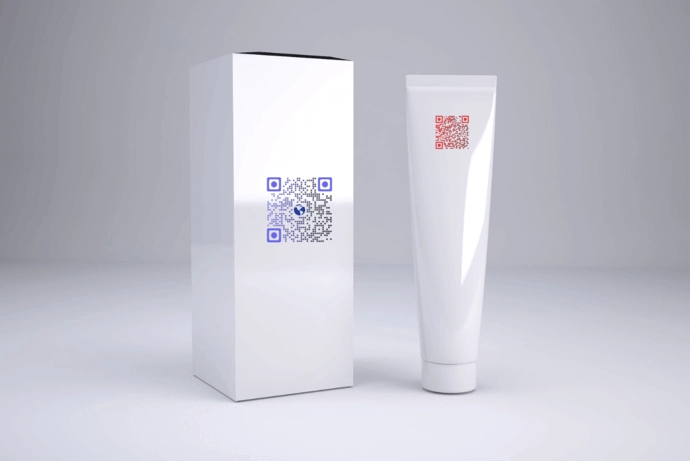Say you’re a product manufacturing company. It could be food, beverages, electronics, cosmetics, or even household products. And like any business, you’d like to make the most of it.
The first step towards achieving that goal is via product packaging. Wondering why? Well, that’s because the packaging is the first and foremost thing that people notice about your product.
There’s a lot that you can do with your product packaging. For example, share detailed user manuals, gain website traffic or social media followers, and manage inventory. Wondering how?
With QR Code technology. QR Codes have been around for more than 2 decades now. From payments to inventory management, they are being used across different use cases.
In this article, we’ll see seven ways how you can use a QR Code on product packaging and tags.
Let’s get started:
1. Give product details
If you’re into business, you know how important it is to share product information with your customers. After all, that’s the best way to ensure product transparency and gain their trust.
But traditional product packaging has its shortcomings—limited printing space. It hinders you from providing complete information. But QR Codes have got you covered. They can help you provide as much information as you want without worrying about the limited packaging space.
To do it, all you have to do is—create a Product QR Code and add the required details to it. It could be anything such as images, text, website links, and even social media sharing buttons.
After creating it, you just have to add it to the product packaging. And your customers can then scan it to see complete product details.
The best part is it occupies only a little space and can be added alongside into the packaging design.
2. Manage inventory
You’ve probably seen barcodes along with MRP software being used for inventory management purposes. However, they come with the following limitations:
a. Limited scope for storing information
b. They can only be scanned from left to right. Hence, you need to align them along the length of the scanners. This often translates to more time being taken to scan them
c. Barcodes don’t get scanned once damaged (which is quite common during inventory handling)
d. You cannot edit them with new information once you’ve created them
However, this is a solution that can help you eliminate all these problems—QR Codes.
In fact, various industries have already started replacing barcodes with QR Codes for inventory tracking. Thus, it makes sense for you to follow the same. To do it, you need a tool to generate them. And you can do it via a QR Code bulk generation service that allows you to create multiple QR Codes smoothly in no time.
Generate a QR Code For Your Unique Case
START TODAY!
3. Give coupons and discounts
You probably know the importance of coupons and discounts. They are used to attract new customers while keeping the existing ones coming back.
And a Coupon QR Code can help you ease this process. It serves two benefits:
a. First, QR Codes make the entire coupon redemption process contactless. That means you can just have to add them to the product packaging and customers can then scan to redeem it
b. Moreover, with a Coupon QR Code, customers don’t have to remember the code or type it manually. All they have to do is—simply scan the QR Code and click on the Redeem button to avail it
Learn all about the types of QR Codes here
4. Gather feedback
It is quite common and important for a business to get regular customer feedback. Such feedback gives valuable insights. They help determine whether your customers are enjoying your services or not.
And with such data, you can identify your areas of improvement.
But it’s not easy to get customer feedback. That’s because to access the feedback form, they first have to tediously type the form URL in the browser. Only after that, they can access the form and fill it out.
However, a QR Code can make this entire process easier. Just create a feedback QR Code and put it on your product packaging.
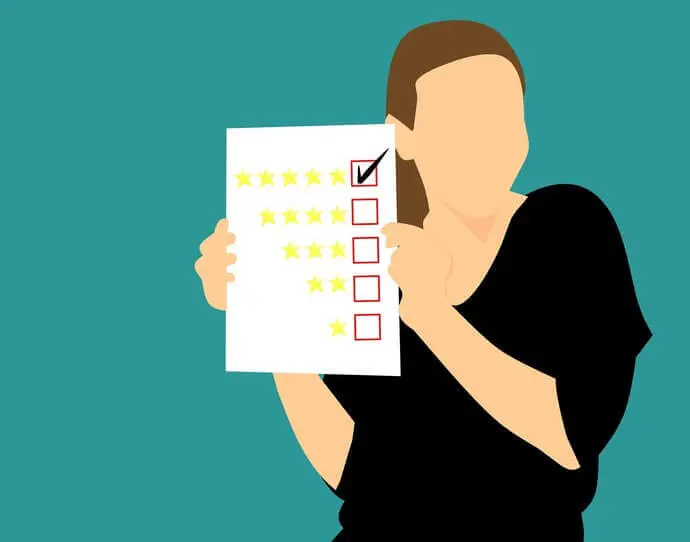
When scanned, customers will simply be redirected to the form where they can easily fill it. No need for them to manually type anything. And the simpler the process, the better are the conversions (forms filled) here.
5. Drive web traffic or social media followership
Today, almost every business has a website. And if you also have one for your business, you’d want people to visit it.
And a Website URL QR Code can help you do that. Just create one and place it on product packaging. When scanned, it will take users to your website in no time.
Similarly, a Social Media QR Code can help increase your social media following. This QR Code, when scanned, redirects end-users to a web page containing buttons with links to all your social media accounts. They can then select their favorite one to follow you online.
6. Increase app downloads
Many businesses have their own mobile app. And if you also have one, then you’d want people to use it.
And the first step towards achieving that is via download. That’s right. You need people to first download it, only then they can use it.
And an App Store QR Code can help you do it. Just place it on your product packaging. As customers scan it, it will redirect them to your app on the relevant app store depending on their phone’s operating system.
In case, you’d like them to visit a particular page in your app, you can go for an App Deep Link QR Code.
7. Product authentication
Forgery and duplicate products have become a common issue across industries. From pharmaceuticals to apparel, it affects them all. It causes a loss of revenue while damaging your brand image too.
And in such cases, QR Codes have got you covered. Just add a QR Code to the product packaging. When customers scan this QR Code, they’ll be able to verify the authenticity of the product and differentiate it from a fake copy easily.
Related : How To Make QR Code For App Links: Everything You Need To Know
B. Types of product packaging’s QR Codes can help you with
1. Primary Packaging
Primary packaging is the one that makes direct physical contact with your product. It serves two important functions:
- The first is to provide adequate protection of the product. It can be against factors such as moisture or impact
- The second purpose is to inform the customers about the product’s details, uses, and features, etc.
And QR Codes can help you easily offer this information. You can add a Social Media QR Code or Website QR Code here. And customers can scan them to check all the details on their phone.
2. Secondary Packaging
Secondary packaging is protection packaging. It is commonly used for bundling, and marketing purposes. This packaging is the first thing customers see when shopping in-store. For example, the box that contains your medicines, shampoo, or makeup.
So, it can play a huge role in boosting sales. And to do it, you need to make your secondary packaging more attractive. This will give your customers an extra nudge to buy your product.
With this packaging, you can also offer information such as product specifications, how-to guides, and more. Here, QR Codes can help you do it in a much simpler way. Just add a Website URL QR Code or PDF QR Code with required document files. And customers can view them on their phones.
3. Tertiary Packaging
Tertiary packaging is different from the other two. That’s because this packaging is not seen by the end-user. Hence, no need for visual appeal. For example, boxes and crates are used for shipping products.
Its goal is to protect during shipping and storage. However, these are often used for logistical purposes. And, as mentioned above, QR Codes on these layers can help make inventory tracking better.
C. Examples of Companies using QR Codes on product packaging
1. Cornitos
Cornitos Nacho Crisps added a QR Code to their product packaging. When scanned, customers see the complete Cornitos product range.
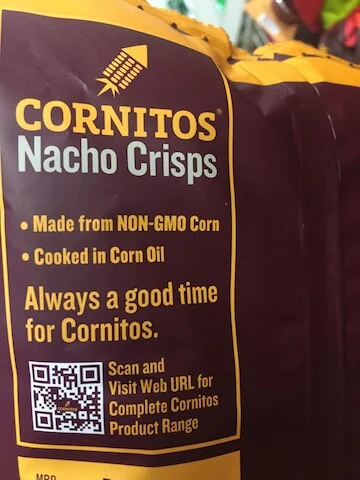
2. Amul
Amul, an Indian dairy brand, also uses QR Codes on its dark chocolate product packaging. It takes customers to Amul’s website. Here, they can learn more about the brand and its offerings.
3. Nestle
In 2015, Nestle’s instant noodles brand Maggi was nationwide banned. It was claimed that the noodles contained impermissible levels of lead.
However, soon the ban was lifted. And to build customers’ trust, Nestle decided to use QR Codes. Here, they would give the product’s nutritional details to the customers.
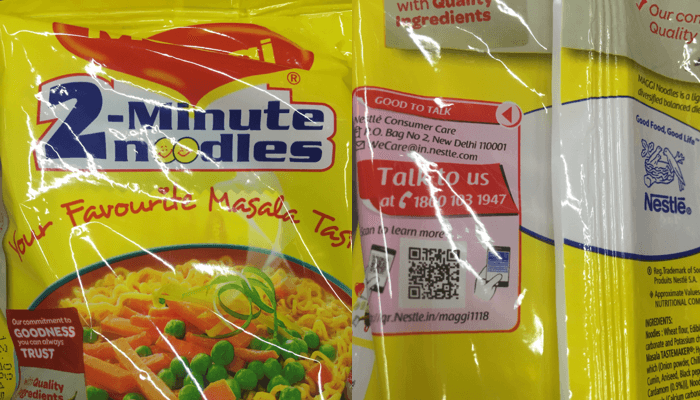
When scanned, it took people to a mobile page containing all the nutritional information, product source, and various recipes for customers to try. It also talked about the Nestle community, the company, and responsible sourcing.
4. Myntra
Myntra, an Indian fashion e-commerce company has used QR Codes on product delivery packages to push sales. When scanned, they redirect the customers to a coupon. These coupons act as an incentive for customers to get a discount by making a repeat purchase with Myntra.
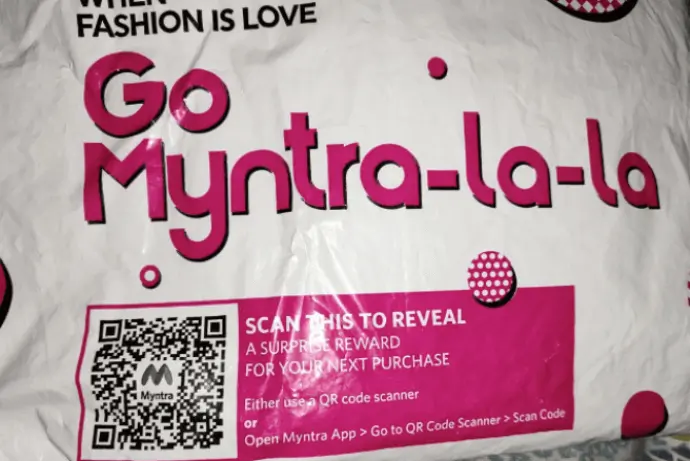
D. How to create a QR Code for product packaging
Now you know why it makes sense to take advantage of QR Codes for product packaging. Next question is—how to create one?
I. Create QR Codes one by one
This method works well for those who don’t require hundreds or thousands of QR Codes. It offers you various types of QR Code categories to choose from such as Website URL QR Code, Product QR Code, etc.
To create one, you simply need a QR Code generator. You can find various QR Code generators online. But typing the query and comparing each result to find the best one is a tedious process. So, to help you out, here is a detailed comparison of the best QR Code generator available online. You can go through it to find the best one for yourself.
Once you have finalized the QR Code generator, you can go ahead and create your own QR Code.
II. Create QR Codes in bulk
However, if you want to create QR Codes in bulk, then choose this option.
To do it, you’d need a bulk QR Code generation service. It allows you to create up to 100,000 QR Codes in one go. Thus, you no longer need to generate QR Codes one by one.
Bulk QR Code generation service offers a variety of choices. For example, Website URL QR Codes, Simple Text QR Codes, Serial Code QR Codes, and VCard QR Codes.
To make use of it, you simply need to upload a data file in XLS, CSV, or XLSX formats. And this file needs to have all the data to be encoded in the QR Codes. Once done, you just have to wait for the QR Codes to be generated and download them in a zip folder.
For more information, here is a detailed guide on how to generate QR Codes in bulk.
III. Create QR Codes programmatically
If you want to integrate QR Code generation into your own information system, then QR API can help you do it.
It allows you to generate QR Codes programmatically in real-time. Hence, there is no manual intervention required to create the QR Codes.
That’s it. Your QR Code will be downloaded and ready for use. It is always advisable to test scan the QR Code before putting it out for your customers.
That is all you need to know about QR Codes on product packaging. You can now go-ahead to create a QR Code and make your products better.
Generate a QR Code For Your Unique Case
START TODAY!
